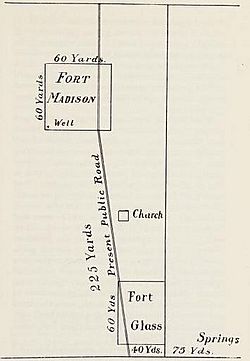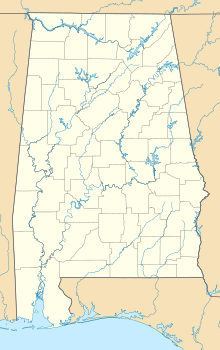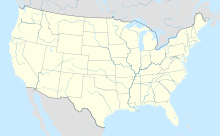Fort Glass facts for kids
Quick facts for kids Fort Glass |
|
|---|---|
| Suggsville, Alabama in United States | |

Sketch of Fort Glass and Fort Madison
|
|
| Coordinates | 31°31′19″N 87°43′08″W / 31.52194°N 87.71889°W |
| Type | Stockade fort |
| Site information | |
| Owner | Private |
| Controlled by | Private |
| Open to the public |
No |
| Site history | |
| Built | July 1813 |
| Built by | Mississippi Territory settlers |
| In use | 1813 |
| Battles/wars | Creek War |
Fort Glass was a simple fort built from logs. It was put up in July 1813. This fort was located in what is now Clarke County, Alabama. It was built during the Creek War, which was part of the bigger War of 1812.
Contents
History of Fort Glass
Why Forts Were Built
The Creek War was a tough time for everyone. It started as a fight within the Creek tribe. Some Creeks, called the Red Sticks, wanted to keep their old ways. They were angry about American settlers moving onto their lands. Another group, called the White Sticks, were friendly with the American settlers.
A famous Native American leader named Tecumseh gave powerful speeches. These speeches made the Red Sticks even more determined. The United States government worried that the Red Sticks might join forces with Great Britain. This was because the U.S. was already fighting Britain in the War of 1812. So, the U.S. started helping the White Sticks.
Red Stick warriors began attacking White Stick villages. They also attacked American settlers. Many settlers were living on public lands without official permission. These people were called squatters. They were scared and worried the government might not protect them. To stay safe, they quickly built small forts from logs. Most of these forts were named after the person who owned the land. After the Creek War ended, most of these temporary forts were taken down.
Fort Glass During the Creek War
Zachariah Glass built Fort Glass in 1813. The fort was named after him. It was shaped like a rectangle, about 60 yards long and 40 yards wide. It was made from strong pine logs.
A brave soldier named Samuel Dale visited Fort Glass. He was on his way to Georgia. The people at the fort asked him to stay. For a short time, Dale was in charge of Fort Glass.
Later, Colonel James Caller passed through Fort Glass. He was leading soldiers from Fort St. Stephens. They were trying to stop Peter McQueen's group of Red Sticks. McQueen's group was bringing supplies from Pensacola. When Caller left Fort Glass, more soldiers joined him. A group of volunteers from Fort Glass, led by Samuel Dale, went with them. These volunteers fought in the Battle of Burnt Corn on July 27, 1813.
After the Battle of Burnt Corn, General Ferdinand Claiborne was worried. He thought the Red Sticks might try to get revenge quickly. So, he sent Colonel Joseph Carson with 200 mounted soldiers to Fort Glass. These soldiers arrived on August 10, 1813. They were there to protect the settlers nearby.
Soon after arriving, the soldiers started building a new fort. It was about 225 yards northwest of Fort Glass. This new fort was named Fort Madison. It was named to honor President James Madison. Soldiers stayed in both Fort Glass and Fort Madison. However, Fort Madison became the main military base for the area. This area was between the Alabama River and Tombigbee River.
After the Red Sticks attacked Fort Sinquefield, the settlers there fled. They went to Fort Glass and Fort Madison for safety. Ten men from Fort Glass went back to Fort Sinquefield. They helped recover the bodies of those who had died. When news of the attack reached Fort Glass, Jeremiah Austill rode his horse to tell General Claiborne. He stopped overnight at Fort Carney on his way to Mount Vernon.
Fort Glass Today
Today, nothing remains of Fort Glass. In 1858, the Fort Madison Church was built where Fort Glass once stood. Experts have tried to find the exact spot of Fort Glass. They have done archaeological surveys. However, they have not found any clear signs of the old fort.



